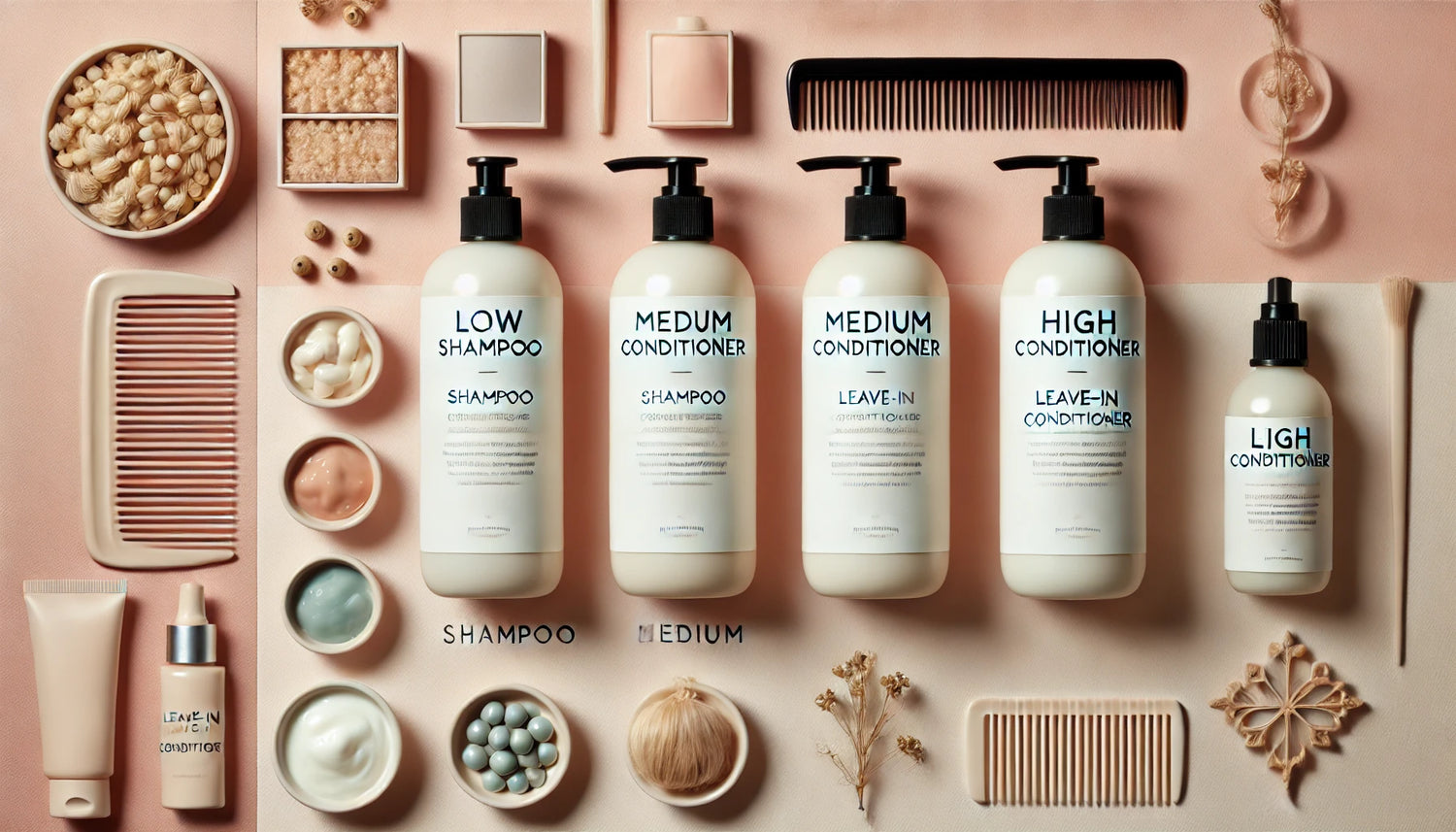Your hair’s porosity is one of the most important factors in determining how well it absorbs and retains moisture. For those with textured hair—whether it’s curly, coily, or wavy—understanding your hair porosity can be a game-changer in creating a haircare routine that keeps your strands hydrated, healthy, and thriving.
In this guide, we’ll break down what hair porosity means, how to determine your porosity level, and how to care for your hair based on its unique needs.
What Is Hair Porosity?
Hair porosity refers to your hair’s ability to absorb and retain moisture. This depends on the condition of your hair’s cuticle layer, which acts as the outermost barrier of each strand. Textured hair, in particular, often struggles with moisture retention because of its natural structure, making porosity even more critical to understand.
There are three main levels of hair porosity: low, medium (or normal), and high. Each comes with its own characteristics and challenges.
The Three Types of Hair Porosity
1. Low Porosity Hair
Low porosity hair has tightly closed cuticles, making it difficult for water and hair products to penetrate.
Characteristics:
• Water tends to bead on the surface of the hair instead of being absorbed.
• Products can build up easily, leaving hair feeling heavy or greasy.
Challenges:
• Moisture struggles to enter the hair shaft, which can leave hair feeling dry.
Care Tips:
• Use lightweight, water-based products to avoid buildup.
• Incorporate heat (like a warm towel or steamer) during conditioning to open the cuticle for better absorption.
Recommended Products for Low Porosity Hair:
• Shampoo: Kinky-Curly Come Clean Moisturizing Shampoo
• Leave-In Conditioner: Camille Rose Honey Hydrate Leave-In
• Deep Conditioner: Mielle Organics Babassu Oil & Mint Deep Conditioner
2. Medium (Normal) Porosity Hair
Medium porosity hair has a balanced cuticle layer that absorbs and retains moisture well.
Characteristics:
• Hair holds moisture for a reasonable amount of time.
• Minimal frizz and dryness when properly cared for.
Challenges:
• Can become high porosity with damage or over-processing.
Care Tips:
• Maintain a consistent routine to keep the cuticle layer intact.
• Avoid overloading your hair with heavy products.
Recommended Products for Medium Porosity Hair:
• Shampoo: SheaMoisture Coconut & Hibiscus Curl & Shine Shampoo
• Conditioner: Cantu Shea Butter Hydrating Cream Conditioner
• Styling Cream: Curlsmith Curl Defining Styling Soufflé
3. High Porosity Hair
High porosity hair has an open cuticle structure, which allows moisture to enter easily but also escape quickly.
Characteristics:
• Hair often feels dry and prone to frizz.
• Quick absorption of products, but they don’t last long.
Challenges:
• Struggles with moisture retention, making the hair prone to breakage.
Care Tips:
• Use sealing products like heavy creams and oils to lock in moisture.
• Incorporate protein treatments to strengthen the hair and repair the cuticle.
Recommended Products for High Porosity Hair:
• Shampoo: Briogeo Don’t Despair, Repair Super Moisture Shampoo
• Protein Treatment: ApHogee Two-Step Protein Treatment
• Sealing Oil: The Mane Choice Ancient Egyptian Anti-Breakage Oil
How to Determine Your Hair Porosity
Figuring out your hair porosity is easy with these simple methods:
1. The Float Test:
• Take a clean strand of hair and drop it into a glass of water.
• If it floats, you have low porosity.
• If it sinks slowly, you have medium porosity.
• If it sinks quickly, you have high porosity.
2. The Slip Test:
• Slide your fingers up a strand of hair toward your scalp.
• If it feels smooth, you likely have low porosity.
• If it feels slightly bumpy, your porosity is high.
3. Water Absorption:
• Observe how long it takes for your hair to absorb water in the shower.
• Low porosity hair repels water, while high porosity hair absorbs it quickly.
Caring for Textured Hair Based on Porosity
Textured hair often varies in porosity across the scalp, so it’s important to tailor your routine to its specific needs.
• For low porosity hair, focus on lightweight, hydrating products and occasional clarifying treatments.
• For high porosity hair, prioritise deep conditioning, sealing products, and regular protein treatments to restore moisture and strength.
• For medium porosity hair, maintain a balanced routine to avoid damaging your strands.
Conclusion
Understanding your hair porosity is key to building a haircare routine that works for you. By identifying whether your hair is low, medium, or high porosity, you can choose products and techniques that optimize moisture retention and improve the health of your textured hair.
Take the porosity test today, try out some of these recommended products, and start your journey to healthier, more manageable hair!

